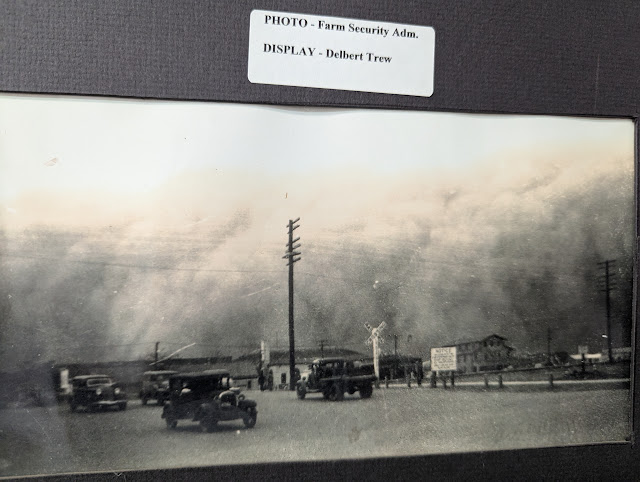The Dust Bowl was a severe drought and dust storm event that affected the Great Plains region of the United States, primarily between 1930 and 1940. It was caused by a combination of factors, including drought, poor farming practices, and high winds, which led to massive soil erosion and dust storms. The Dust Bowl had a significant impact on the environment and economy, and it also led to widespread migration and hardship for those living in the affected areas.
Causes:
- .A prolonged drought, which lasted for several years, severely reduced soil moisture and made the land vulnerable to erosion.
- .Farmers overgrazed livestock, which depleted the vegetation cover and left the soil bare.
- .Deep plowing and other farming techniques removed the natural vegetation that held the soil in place.
- .The combination of drought and poor soil cover led to severe wind erosion, resulting in dust storms.
Impact:
- The Dust Bowl caused widespread soil erosion, leading to the loss of topsoil and the degradation of agricultural land.
- The Dust Bowl had a devastating impact on farmers, who lost their livelihoods and crops.
- The Dust Bowl led to widespread migration as people left their homes in search of work and better living conditions.
- The dust storms caused respiratory illnesses and other health problems for those living in the affected areas.
Relief Efforts:
- .The government implemented various programs to help farmers cope with the Dust Bowl, including the Civilian Conservation Corps (CCC), which provided jobs and relief to those in need.
- .Efforts were made to promote soil conservation practices, such as contour plowing and windbreaks, to help prevent future soil erosion.
The Dust Bowl is a stark reminder of the importance of sustainable farming practices and the potential consequences of environmental degradation.









No comments:
Post a Comment